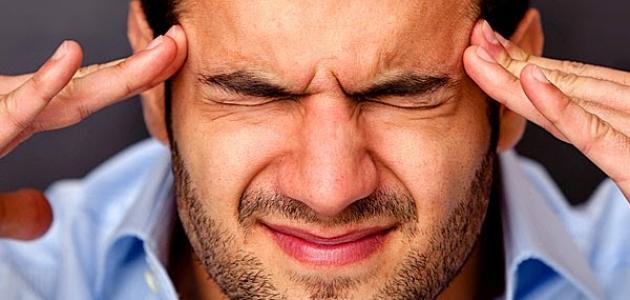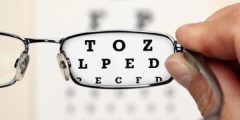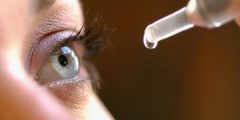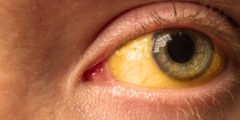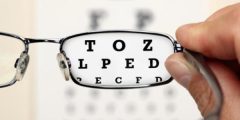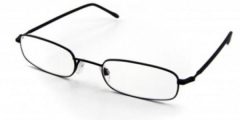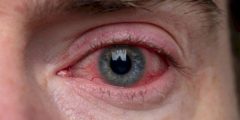Eye headache
Headache is known as pain in any part of the head. The headache can be in the forehead, in the neck, or behind the eyes. An eye headache or a headache that affects the area behind the eye or around the eye is one of the types of headaches. Commonly spread, as it occurs behind both eyes or one of them, and this headache may cause the eye to become sensitive to light in addition to causing discomfort to the affected person.
Causes of eye headache
The cause of headaches is due to several health conditions or diseases, and it is preferable to know the reason that led to the headache in order to find the appropriate treatment for it. We will review below some of these causes:
Cluster headache
Cluster headaches are known as a series of short and very painful headaches that occur every day for several weeks or months, and which can coincide with the change of seasons, especially spring and winter. The headache is in the form of sharp pain around or behind one eye, so that The attack lasts from 15-90 minutes and may last up to three hours. Increased redness and swelling of the eyes, an increase in tears, redness and heat of the face, increased sweating, and other symptoms accompanying the headache can be observed. The incidence usually occurs after the age of thirty, and it is reported that the possibility of infection in men is higher. More than women, in addition to the effect of smoking and drinking alcohol in triggering a headache attack.
Read also:Eyelash dandruff treatment
Eye strain headache
Eyestrain (in English: Eyestrain) expresses a group of symptoms resulting from fatigue of the eyes through prolonged use of the computer, exposure to bright light that is not suitable for the eyes, or driving or reading for long periods. It is worth noting that eye strain is not a disease in itself; Rather, it is one of a group of symptoms, including: headache, blurred vision, dry eyes, and difficulty concentrating. This headache can be treated by resting the eyes from time to time by closing them, and trying to reduce the causes of the headache.
tension headache
Tension headache is the most common type of headache, because it results from a person being exposed to tension, stress, or heightened emotions, which affects the muscles of the face, neck, and scalp, as some studies have shown. Tension headaches can be described as pressing pain in the forehead or back. And the side of the head, and may extend behind the eyes, and its treatment is by taking pain-relieving medications in addition to following stress control methods. It is preferable to follow a healthy lifestyle that depends on sleeping enough hours daily, exercising, and eating regular meals while drinking sufficient amounts of water. Avoid smoking, reduce the amount of caffeine consumed, and avoid drinking alcoholic beverages. It should be noted that tension headaches are divided into two basic types:
Read also:Treatment of upper eyelid puffiness- Episodic tension headaches: (English: Episodic tension headaches), which can extend from 30 minutes to a week, and the headache may be considered periodic if it recurs on less than 15 days of the month within three months, and thus this type of headache can turn into a chronic headache.
- Chronic tension headache: (in English: Chronic tension headaches), which can extend for several hours or be continuous, and the headache is considered chronic if it recurs for more than 15 days during the month for a period of at least three months.
Migraine headache
Migraine is known as a pulsating migraine headache. That is, it is often in one half of the head, including pain behind the eye. The pain is progressive, meaning it begins with moderate pain and then worsens over time until the pain becomes severe. It can coincide with feelings of nausea and vomiting, and the headache extends from several hours to a few days, and increases. The incidence of migraine in females, or if there is a history of migraine in the family, or in the case of suffering from some medical conditions such as depression, epilepsy, etc. There are some factors that stimulate the occurrence of a migraine attack, including:
- Stress and psychological anxiety.
- Hormonal changes in females.
- Bright lights, loud noises, and strong smells.
- Not getting enough hours of sleep.
- Taking medications, certain foods, smoking, drinking caffeine, and drinking alcohol.
Read also:Harmful effects of LASIK surgery
Sinus headache
The sinuses are known as spaces between the facial bones and extend from the cheeks to the forehead and around the eyes. They are connected to each other and to the nose and mouth. When inflammation occurs in the sinuses (in English: sinusitis), the secretion of mucus from them increases, and swelling occurs in the inner wall of the sinuses and the nose, which may It causes them to close, and the cause of the inflammation is due to allergies, or exposure to a bacterial infection, which sometimes causes the patient’s temperature to rise, in addition to headaches resulting from blocked sinuses. The pain is behind the eyes or in the front area of the face. The pain increases when bending forward, and in the morning, It usually subsides during the day, in addition to increasing pain in cold and moist areas.
other reasons
There are other reasons that lead to headaches around or behind the eyes, as headaches are one of their symptoms, and in this case it is best to consult a specialist doctor, including: Brain tumors, meningitis, post traumatic headache, and other causes.
Eye headache treatment
Headaches are treated with painkillers such as aspirin or ibuprofen. In cases of severe headaches, the specialist doctor prescribes muscle relaxants or antidepressant medications as another solution to the problem. He advises those who suffer from any of the types of headaches mentioned above to be careful to exercise. Exercise daily, reduce drinking stimulants that contain caffeine, and avoid smoking.
